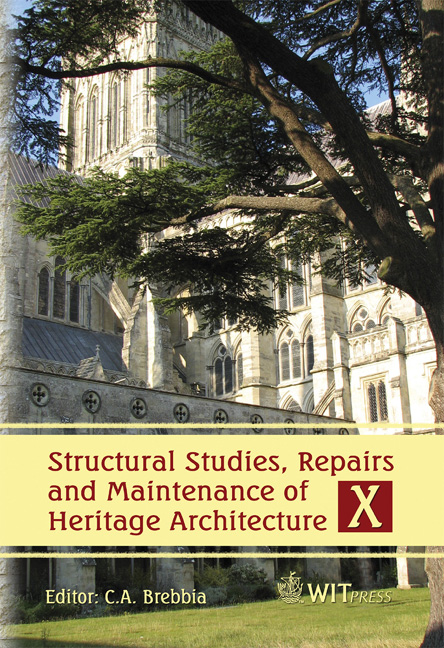Strength Appraisal Of Wooden Members In Service By Combining New And Old Technology
Price
Free (open access)
Transaction
Volume
95
Pages
9
Published
2007
Size
369 kb
Paper DOI
10.2495/STR070261
Copyright
WIT Press
Author(s)
J. S. Machado
Abstract
Structural safety analysis of old timber structures is based on gathering step-bystep information about the characteristics of the wooden structural elements leading to allocation of residual strength values. Although this task is often supported on a probabilistic basis (strength Probability Distribution Function of a certain visual strength grade) turns out quite deterministic when strength values allocation is carried out in an global (structure) or local (member) manner by assignment of the same strength value to different structural timber members (showing different defects and/or the same defect but with different levels of magnitude) based on the 5th percentile corresponding to a certain visual strength grade population. This simple approach leads in most cases to over conservative values resulting in recommendations for the replacement of old timber structures after carrying out safety structural analysis following current design standards (Eurocode 5). This outcome was observed while performing safety analysis on different historical timber constructions in Portugal (roofs and flooring systems) which stayed in service for more than 100 years and showed incipient levels of deterioration. Having in mind the need to maintain historical timber structures a new approach for allocating strength values to individual timber members is presented and discussed. This approach is based on the experience and data obtained during the development of visual grading standards and the use of new technologies available nowadays (for instance probing and ultrasounds). The possibility of combining information from new and old technology will be evaluated by testing pine timber beams and by application to a case study. Keywords: timber, structures, survey, resistance, ultrasounds.
Keywords
timber, structures, survey, resistance, ultrasounds.




